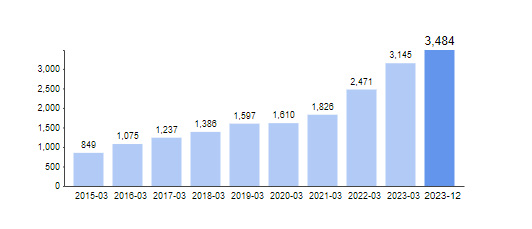20 Good Suggestions For Choosing Ai Stock Trading Apps
Top 10 Tips For Optimizing Computational Resources For Ai Stock Trading From Penny To copyrightIt is essential to maximize your computational resources to support AI stock trading. This is especially important when dealing with penny stocks or volatile copyright markets. Here are 10 best strategies to maximize your computational capabilities:
1. Cloud Computing is Scalable
Tip Tips: You can increase the size of your computational resources by making use of cloud-based services. They include Amazon Web Services, Microsoft Azure and Google Cloud.
Cloud-based services enable you to scale down and up depending on the volume of trading, model complexity, data processing requirements and so on. Particularly when trading in volatile markets such as copyright.
2. Pick high performance hardware to get Real Time Processing
TIP: Think about investing in high-performance hardware, such as Tensor Processing Units or Graphics Processing Units. These are perfect to run AI models.
The reason: GPUs and TPUs are crucial to quick decision making in high-speed markets like penny stocks and copyright.
3. Improve the speed of data storage and Access
Tip: Use effective storage options such as solid-state drives (SSDs) or cloud-based storage solutions that provide speedy data retrieval.
The reason: Rapid access to historic data and real-time market data is critical to make timely AI-driven decisions.
4. Use Parallel Processing for AI Models
Tips: Make use of parallel computing to perform multiple tasks at once for example, such as analyzing different markets or copyright assets.
Parallel processing can be a very powerful tool for data analysis and modeling models, especially when dealing with large amounts of data.
5. Prioritize Edge Computing in Low-Latency Trading
Make use of edge computing to run calculations that are closer to data sources (e.g. data centers or exchanges).
The reason: Edge computing decreases the time it takes to complete tasks, which is crucial for high-frequency trading (HFT) and copyright markets, as well as other industries where milliseconds truly matter.
6. Improve the efficiency of the algorithm
To enhance AI efficiency, it is important to fine-tune the algorithms. Techniques such as pruning are useful.
Why: Optimized model uses less computational resources and still maintains efficiency. This eliminates the need for excessive hardware. Additionally, it accelerates trading execution.
7. Use Asynchronous Data Processing
Tip The synchronous processing method is the most efficient way to ensure that you can get real-time analysis of data and trading.
What is the reason? This method decreases downtime and improves efficiency. This is particularly important for markets that move quickly like copyright.
8. Control the allocation of resources dynamically
Tips: Use the tools for resource allocation management that automatically assign computational power according to the demand (e.g. in the course of markets or during major events).
The reason Dynamic resource allocation guarantees that AI models operate efficiently without overloading the system, thereby reducing downtime during peak trading periods.
9. Make use of light models for real-time trading
Tips: Use light machine learning models that allow you to quickly make decisions using real-time information without the need for significant computational resources.
Reasons: For trading that is real-time (especially with penny stocks and copyright), fast decision-making is more crucial than complicated models, since the market's environment can be volatile.
10. Monitor and Optimize Costs
TIP: Always track the cost of computing your AI models and adjust them to ensure efficiency and cost. You can choose the best pricing plan, such as spots or reserved instances depending on your requirements.
The reason: A well-planned utilization of resources means that you're not spending too much on computational resources, especially essential when trading on narrow margins in copyright or penny stock markets.
Bonus: Use Model Compression Techniques
You can decrease the size of AI models by employing model compression methods. These include distillation, quantization and knowledge transfer.
The reason: They are ideal for trading in real-time, when computational power is often restricted. The compressed models offer the highest performance and efficiency of resources.
You can maximize the computing resources available for AI-driven trading systems by following these strategies. Your strategies are cost-effective as well as efficient, whether trading penny stock or copyright. See the best ai stock for site recommendations including free ai tool for stock market india, best ai penny stocks, ai trading, ai stock trading bot free, best ai trading bot, stock analysis app, ai day trading, best copyright prediction site, penny ai stocks, best ai stock trading bot free and more.

Top 10 Tips For Ai Stock Pickers To Increase The Quality Of Their Data
AI-driven investing, stock predictions and investment decisions require high-quality data. AI models are able to be able to make informed decisions if they have high-quality data. Here are 10 suggestions to ensure high-quality data to use with AI stock-pickers.
1. Prioritize clean, well-structured data
Tips: Ensure that your data is clean, error-free, and formatted in a consistent manner. It is crucial to eliminate duplicate entries, handle the absence of values, and maintain data integrity.
What is the reason? AI models are able to analyze information more effectively when they have clear and well-structured data. This results in more precise predictions and less errors.
2. Timing is the key.
Tip: Use up-to-date market data that is real-time for predictions, including stock prices, trading volumes Earnings reports, stock prices, and news sentiment.
What's the point? By using current data, AI models can accurately predict market trends even in volatile markets like penny stocks or copyright.
3. Source data from reliable suppliers
TIP: Choose reliable data providers and have been verified for both fundamental and technical information like economic statements, financial reports and price feeds.
Why is this? The use of reliable sources decreases the risk of data inconsistencies or errors which could affect AI model performance and cause inaccurate predictions.
4. Integrate multiple data sources
Tips: Make use of different sources of data for example, financial statements and news sentiment. You can also combine macroeconomic indicators with technical indicators, such as moving averages or RSI.
The reason: A multi-source strategy provides a holistic overview of the stock market and lets AI to make informed decisions by analyzing different aspects of its behaviour.
5. Backtesting using historical data is the focus
To assess the effectiveness of AI models, gather high-quality historical market data.
Why: Historical information helps to improve AI models. It also lets you to simulate strategies to evaluate the risk and return.
6. Verify the Quality of data continuously
TIP: Make sure you regularly audit and validate data quality by examining for irregularities, updating outdated information, and ensuring that the data's accuracy.
The reason: Consistent validation of data lowers the risk of making inaccurate predictions due to outdated or incorrect data.
7. Ensure Proper Data Granularity
TIP: Choose the most appropriate level of data granularity that fits your plan. For instance, use minute-by-minute data for high-frequency trading or daily data for investments that last.
What's the reason? The correct level of granularity in your model is critical. High-frequency data can be useful for trading in the short term, however information that's more complete and less frequent could be used to aid in long-term investment.
8. Utilize alternative sources of data
Make use of alternative sources of data for data, like satellite imagery or sentiment on social media. You can also use scraping the internet to uncover market trends.
What's the reason? Alternative data can provide unique insights into market behavior, giving your AI system an advantage by identifying patterns that traditional data sources could overlook.
9. Use Quality-Control Techniques for Data Preprocessing
Tips. Utilize preprocessing techniques like feature scaling, normalization of data, or outlier detection to enhance the accuracy of your data before you feed it into AI algorithms.
Why: Preprocessing the data properly ensures that AI models can understand it correctly. This will reduce mistakes in prediction and boost the overall performance of the model.
10. Monitor Data Drift and adapt Models
Tips: Continuously check for the possibility of data drift, in which the nature of the data changes over time, and adapt your AI models to reflect this change.
What is the reason? Data drift is a problem that affects model accuracy. By detecting data changes and adjusting accordingly to the changing data, your AI models will remain effective especially when markets are volatile, such as penny stocks or copyright.
Bonus: Maintaining an Feedback Loop to Improve Data
Tip: Set up a loop of feedback in which AI models continuously learn from new data. This will improve the process of data collection and processing.
The reason: By utilizing a feedback loop it is possible to improve the quality of your data and also adapt AI models to market conditions.
The importance of focusing on the quality of data is vital for maximizing the potential of AI stock pickers. AI models require fresh, up-to-date, and high-quality data to make accurate predictions. This can lead to more informed investment decision-making. If you follow these guidelines you can make sure that your AI system has the highest quality information base for stock picking forecasts, investment strategies. Check out the recommended full article for more recommendations including smart stocks ai, copyright predictions, ai for trading, ai investing, copyright ai trading, ai stock analysis, ai trader, copyright predictions, copyright predictions, free ai trading bot and more.
